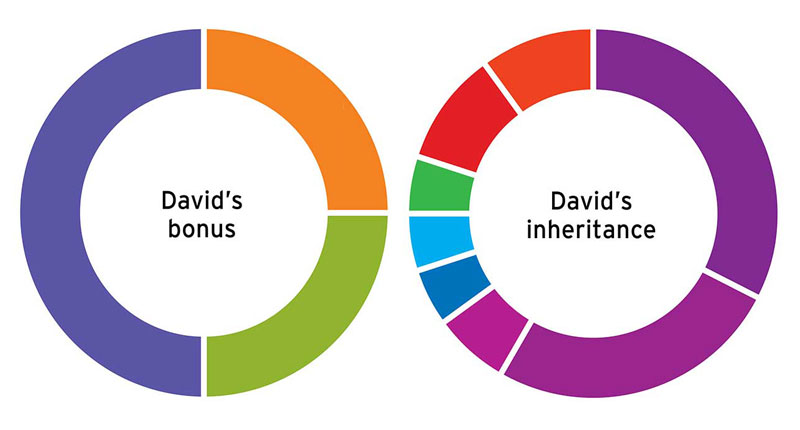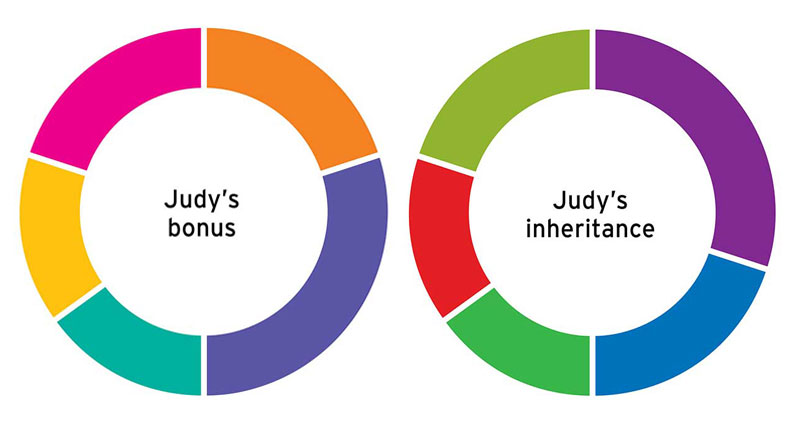

The expert:
Konrad Kopacz, portfolio manager and investment advisor with Echelon Wealth Partners Inc. in Oakville, Ont.
The philosophy:
Kopacz uses a multi-faceted approach to investing, with a focus on high-networth clients and early-stage venture-capital investors. He incorporates a bottom-up style to investing in growth-based businesses and favours incorporating alternative investments into portfolios to help balance the risk/return profile.
The allocation:
Kopacz recommended an overall allocation of 65% to equities, 10% to private equity, 5% in fixed income and 20% to private debt.
- 32.5% to mature, growing, profitable companies such as Calgary-based TransAlta Renewables Inc. (TSX: RNW), a renewable-power generation company; JPMorgan Chase & Co. (NYSE: JPM) and Alphabet Inc. (Nasdaq: GOOG).
- 26% to “higher-growth, higher potential return companies” such as Argentina-based Mercado Libre Inc. (Nasdaq: MELI), host of the largest online commerce and payments ecosystem in Latin America; Washington-based ZoomInfo Technologies Inc. (Nasdaq: ZI), which became a household name during the pandemic; California-based Xilinx Inc. (Nasdaq: XLNX), a tech company; and Delaware-based Coinbase Global Inc. (Nasdaq: COIN), which operates a cryptocurrency exchange.
- 6.5% to the Dynamic Global Growth Opportunities Fund “to add alpha in up or down markets.”
- 5% to the Centurion Apartment REIT, for residential exposure.
- 5% to the CanFirst IncomePlus Real Estate Fund, for industrial REIT exposure.
Kopacz said the real estate funds provide “a great way to gain exposure to illiquid but stable equity classes.”
- 5% to the Pender Corporate Bond Fund, for potentially higher yields.
- 10% to the NinePoint Alternative Income Fund, to capture higher yields without moving too far up the risk curve.
- 10% to Cortland Credit Strategies LP, for access to short-term asset-based lending at the lower end of the risk scale.
“With inflation potentially rearing its ugly head, investing in private debt could continue to work well,” Kopacz said.
Given that this is a smaller account, Kopacz suggested using actively managed equity funds.
- 25% to the Dynamic Active Global Dividend ETF (TSX: DXG).
- 25% to the Pender Value Fund, for small- to mid-cap exposure.
- 50% to the TD U.S. Blue Chip Equity Fund, for diversified U.S. exposure.


The expert:
Alice Tsang, vice-president and portfolio manager with Q Cantar Holdings Inc. in Toronto
The philosophy:
Tsang uses an active management strategy to pursue above-markettrend growth and/or risk-adjusted returns over the medium to long term, while focusing on capital preservation. She relies on top-down, fundamental and technical analysis to enhance returns and reduce risk. Her firm’s in-house portfolios are reviewed and rebalanced regularly to meet ongoing market changes.
The allocation:
- 30% to U.S. equities. Tsang’s top picks include the iShares US Medical Devices ETF (NYSEARCA: IHI); Costco Wholesale Corp. (Nasdaq: COST), which Tsang said has room for expansion and growth; Microsoft Corp. (Nasdaq: MSFT), which “has been executing nearly flawlessly over the past few years;” and California-based Nvidia Corp. (Nasdaq: NVDA), a leader in the semiconductor space.
- 20% to Canadian equities. Tsang’s top picks include Sun Life Financial Inc. (TSX: SLF), “a benefactor of rising interest rates and strong capital markets”; the iShares S&P/TSX Global Base Metals Index ETF (TSX: XBM), because “there’s a resurgence in resource prices due to supply cuts over the years and Covid bottlenecks, [and] the sector is inexpensively valued”; Montreal-based WSP Global Inc. (TSX: WSP), a professional services company, which “should be able to maintain its growth, as spending on projects is expected to remain intact”; and Winnipeg-based Boyd Group Services Inc. (TSX: BYD), one of the largest operators of auto collision and glass repair centres in North America.
- 15% to the Q Marsico Ten Fund, which invests in U.S. growth companies.
- 15% to the Q Marsico Global Fund, which invests in global growth companies. The Q funds typically hold eight to 12 names each, Tsang said. “They are agnostic to market capitalization and are not encumbered by mandates and/or restrictions,” she added.
- 20% to cash, for liquidity and to take advantage of opportunities that may arise in “order to obtain better average pricing for the entire portfolio.”
The allocation:
- 20% to the iShares S&P/TSX 60 Index ETF (TSX: XIU).
- 30% to the iShares Core S&P 500 Index ETF (TSX: XSP), which is hedged to the Canadian dollar.
- 15% to the Q Marsico Ten Fund.
- 15% to the Q Marsico Global Fund.
- 20% to cash, for liquidity and to take advantage of buying opportunities.
